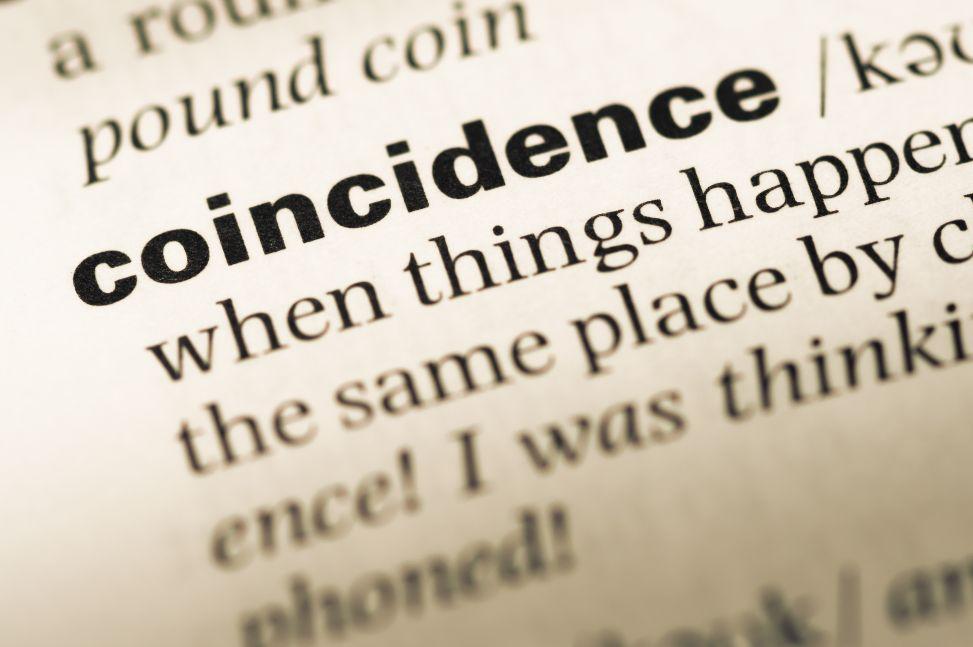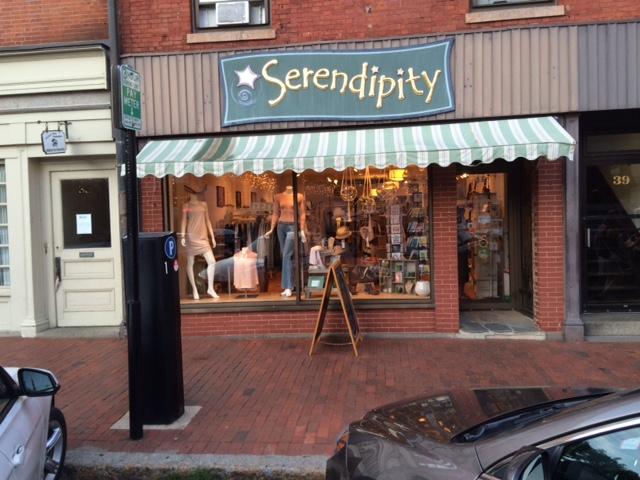To describe and classify is often the first step in developing a new science. Like the early botanists, I am developing a taxonomy for coincidences. Early botanists noticed similarities and differences among plants and categorized them; I’ve noticed the similarities and differences between the coincidental flora and fauna in the forest of daily life.
University of Cambridge Data
David Spiegelhalter at the University of Cambridge collected 4,470 coincidences; Julie Beck reported the results of an analysis of these stories in The Atlantic. A solid 58 percent of the coincidences “included words related to family or loved ones, indicating that people are more likely to notice coincidences involving people closest to them.”
The five most common types of coincidences in this analysis were:
- Sharing a birthday with someone (11 percent)
- Connections involving books, TV, radio, or the news (10 percent)
- Vacation-related coincidences (6.1 percent)
- Meeting people in transit—while walking around, in airports, or on public transportation (6 percent)
- Coincidences related to marriage or in-laws (5.3 percent)
Spiegelhalter is a statistician who believes that coincidences are best understood as interesting examples of the laws of probability at work. For example, the probability of two people having the same birthday is 1/365, which means that if you tell 365 people when your birthday is, you are very likely to find at least one person who shares the same birthday.
Vacation-related coincidences tend to involve unexpectedly running into someone you know. Since you probably know a great many people and you are part of a specific socio-economic group that is likely to take vacations in the same places, the probability of running into someone you know is also fairly high.
The image above is a map by Quid, a data analytic company, made from the full Spiegelhalter study data set. Each dot represents one story, and the lines connect stories that have very strong linguistic similarities. So, the light blue birthday cluster is tightly snarled, because there are only so many variations on finding out you share the same birthday as someone else. But the red cluster of shared death dates has some connections to the birthday cluster, indicating that some coincidence stories involve both birth dates and death dates.
The researchers also looked at the tone of the stories and found that more people described their coincidences using negative language (32 percent) or neutral language (41 percent) than positive language (25 percent). This finding is unexpected because synchronicities are generally considered to be positive experiences.
Weird Coincidence Survey (WCS)
My research approached the question in a different way. While Spiegelhalter asked participants to report their stories, I asked participants to rate the frequency of common coincidences. The list of common coincidences was gleaned from a much longer group of possibilities. (The 12 items of the WCS can be found on my website. You can take the survey to see how sensitive to coincidences you are.)
From 1,551 respondents to the website of the WCS, the most common coincidences were:
- I think of a question only to have it answered by an external source (i.e. radio, TV, or other people) before I can ask it.
- I think of an idea and hear or see it on the radio, TV, or Internet.
- I think of calling someone, only to have that person unexpectedly call me.
- I advance in my work/career/education by being in the right place at the right time.
In descending order of frequency, the rest of the items lined up like this:
- I need something, and the need is then met without my having to do anything.
- I am introduced to people who unexpectedly further my work/career.
- I run into a friend in an out-of-the-way place.
- When my phone rings, I know who is calling without checking the screen or using personalized ring tones.
- Meaningful coincidence helps determine my educational path.
- I think about someone and then that person unexpectedly drops by my house or office, or passes me in the hall or street.
- I experience strong emotions or physical sensations that were simultaneously experienced at a distance by someone I love.
- After experiencing meaningful coincidence, I analyze the meaning of my experience.
The specific frequencies for each item are listed in this bar graph (the scale is from one, “never,” to five, “very frequently”):
In both my analysis and the analysis of stories submitted to Spiegelhalter, coincidences involving external media are relatively common. Though there are some similarities, it is interesting that some different categories grew out of the two different approaches.
I developed my categories through an extensive literature review and statistical winnowing. Quid analyzed the content of voluntarily submitted stories to develop its categories.
The Quid analysis includes categories of marriage- and hospital-related coincidences, which I did not include in my survey. I include categories Quid does not, such as coincidences related to careers and the reflection of one’s thoughts in the external environment.
As we develop the science of Coincidence Studies, ongoing data analyses like these will sharpen the categorization of the coincidences.
Epoch Times reporter Tara MacIsaac co-authored this article. Follow @TaraMacIsaac on Twitter, visit the Epoch Times Beyond Science page on Facebook, and subscribe to the Beyond Science newsletter to continue exploring ancient mysteries and the new frontiers of science!
This article was previously published by Psychology Today, the first of a series of articles by Bernard Beitman, MD, on the science of synchronicity and serendipity. Beitman is a visiting professor at the University of Virginia. He is the former chair of the University of Missouri-Columbia department of psychiatry. See his blog, Connecting With Coincidence, to learn more about Coincidence Studies.






